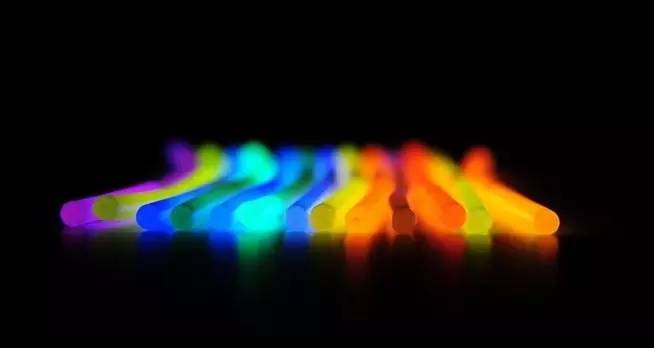
How do glow sticks glow?
A shining chemical reaction ~
to create an atmosphere in concerts and climbing ladders at night, glow sticks are a common choice. Have you ever wondered why these plastic sticks start to glow after breaking?
Do you want to buy the stylish wedding dress without train and accentuate your slender and beauty? Dive in and enjoy the best shopping experience ever.
there are two groups of chemicals hidden in the fluorescent rods: one is a variety of fluorescent dyes + diphenyl oxalate, and the other is or hydrogen oxide solution. The two components will not meet until they are put into use because the hydrogen peroxide solution is encapsulated in a glass tube. The reaction begins when the glass tube is broken by the process of breaking the glow stick.
the chemical reaction in this is actually between hydrogen peroxide and diphenyl oxalate. Under the action of the oxidation of hydrogen peroxide, an intermediate product of 1-dioxane-2-dioxanedione is formed (the structure is shown in the figure below). The product is so unstable that it decomposes spontaneously into carbon dioxide and releases energy in the process. This energy can be transferred to the fluorescent dye molecule, allowing it to enter the excited state. The excited state is also unstable and will eventually return to the low-energy ground state. So where's the extra energy? It becomes the light we see. Fluorescent dyes with different chemical structures can produce light of different colors.
(picture from compound chem click to see a larger picture)
of course, the final reactant will always run out, so the glow stick can't continue to shine at this time. However, there is also a way to extend the life of the glow stick a little bit: put it in the refrigerator. The rate of the chemical reaction is affected by temperature, and if it is stored in a cold place, the rate of reactant consumption will be slower.
because of the irritation of substances such as hydrogen peroxide, it is not recommended to take the glow stick apart and play.
PS: some people abroad have claimed that fluorescent bottles can be made from leftover surf drinks with baking soda and hydrogen peroxide, but this is fake. although fluorescent rods need hydrogen peroxide, there are no suitable reactants and fluorescent substances in soda.